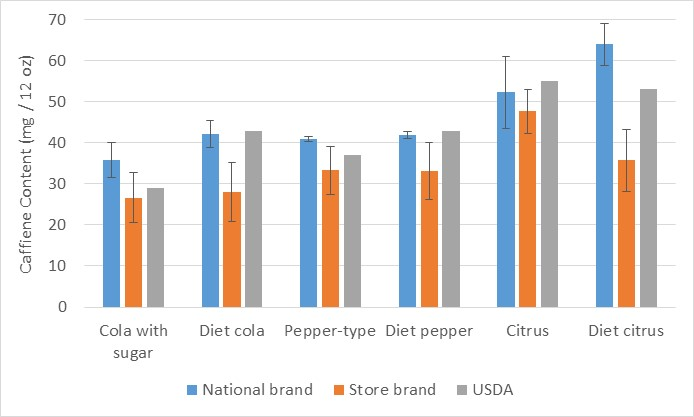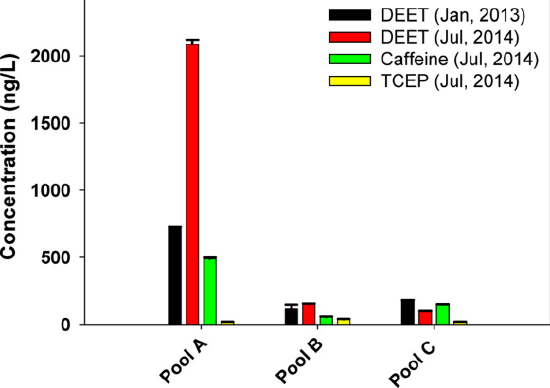Analyzing Literature Articles
- Page ID
- 279189
Literature Assignment
How to complete:
Chemistry has a rich and long history of research and discovery. Because of this, the ability to accurately and effectively navigate the scientific literature is vital. In addition, knowing how to get information from a journal article and understanding the format is important to effectively use the literature. A solid understanding of the organization of an article will greatly help you when you are working on future assignments (method paper, formal labs, etc.).
Using reliable sources, find and record the information as requested. To find journal articles, the ACS publications webpage and Web of Knowledge are good starting points.
Literature Scavenger Hunt:
- Find an article titled “Evaluation of 3D Printing and Its Potential Impact on Biotechnology and the Chemical Sciences” and identify the following information.
- Authors: _________________________________________________________________
_________________________________________________________________
-
Journal: __________________________________________________________________
-
Date Published: ________________________
-
Figure 7 shows ____________________________________________________________
_________________________________________________________________
- Authors: _________________________________________________________________
- Find an article with the DOI 10.1021/acs.jafc.5b04632.
- Journal: __________________________________________________________________
Volume: _______________ Issue: _______________ Page: _______________
-
Date published: ____________________________________
-
Title of a paper that this article cited: ___________________________________________
_________________________________________________________________
- Journal: __________________________________________________________________
- Find an article with the following abbreviated citation: Environmental Science & Technology Letters 2017 4 (3), 105-111. Record the following information.
- Title: _________________________________________________________________
- DOI: _________________________________________________________________
- This same analytical method for application of PIGE has been used on clothing and carpet samples. What is the citation for that paper?
_____________________________________________________________________
_____________________________________________________________________ - Using only the information in the abstract, briefly answer the following about this work.
What did the authors analyze?
Why did they analyze it?
How did they analyze it?
What did they find?
- Find the article listed in problem 3c. Record the following information.
- Journal: __________________________________________________________________
Volume: _______________ Issue: _______________ Page: _______________
-
Title of a paper that this article cited: ___________________________________________
_________________________________________________________________
-
Toward the end of the introduction, often in the last paragraph, it is common to transition from background information to a brief summary of the specific question addressed in the manuscript. What question did these authors want to answer?
- Journal: __________________________________________________________________
- Choose a topic relevant to analytical chemistry that interests you. Search for six relevant journal articles on this topic. List the title, journal, publication date, and DOI for each below. At least two articles must have been published in the last ten years. You must use have articles from at least three different journals. You may type these and attach a printed copy.
Topic: __________________________________________________________________
Now that you can find articles in the primary literature, it is important to understand how articles are formatted and where the information is placed within an article.
Literature Dissection:
Using the provided article, answer each of the following.
Abstract: Below is a list of questions. Read through the abstract and underline sections that answer each of the questions (not all questions are answered). Identify the questions answered in order by placing the appropriate number in the space provided (1, then 2, and so on).
____ How was it analyzed? ____ What was the result of the analysis?
____ What has already been analyzed? ____ Who did the analysis?
____ What is being analyzed? ____ Why is it being analyzed?
Introduction: Using the introduction section only, answer the following questions.
Why is caffeine a compound of interest?
What are the regulations on the content of caffeine in carbonated beverages?
What has been done so far in studying caffeine concentration?
What makes this study different?
What is the overall goal for the study?
Experimental/Materials and Methods: Read through the experimental/materials and methods section and identify which of the following are included. Check the corresponding box for each item that is included.
□ chemicals used □ concentrations of solutions
□ description of data analysis procedures □ glassware used
□ instruments used □ manufacturers of supplies
□ observations □ operating parameters for instruments
□ purpose of experiment □ results of the experiment
□ sample calculations for concentrations □ sample preparation
□ sampling procedure
Results and Discussion: The majority of the figures and tables are often provided in the results and discussion section. The graph below was created from data in table 7. Write, in your own words, an appropriate figure caption.

Conclusion: Below is a list of general questions. Read through the conclusion and underline sections that answer each question. Identify the questions answered by checking the adjacent box.
□ How might this study effect society? □ How was sampling done?
□ What has already been analyzed? □ What was analyzed?
□ What was found? □ Who did the analysis?
□ Why should we care? □ What should be done about the findings?
Is there any new information provided in the conclusion? Yes No
References: This paper is published in a food science journal and the reference section is organized differently than in a chemistry journal. What do you notice, specifically about the in-text citations, that are different between this article and a chemistry journal article?
Literature Puzzle:
A paper titled The Presence of Pharmaceuticals and Personal Care Products in Swimming Pools was used to provide the attached sheet with blocks of text. Read each block and determine and label the section(s) (introduction, experimental, results and discussion, conclusion, references) in which it best fits. Because the text is out of context, some sentences might make sense in multiple sections. You may identify multiple sections for one block of text.
|
Text |
Section |
|---|---|
|
An aliquot was taken and directly analyzed by liquid chromatography and tandem mass spectrometry (LC/MS/MS) for the detection of benzophenone-3 (BP-3) and 6-acetyl-1,1,2,4,4,7-hexamethyltetralin (ATHN). |
|
|
Caffeine and TCEP were found in the summer samples collected from the three pools. Caffeine could be introduced by human excretions (e.g., sweat and urine), but the route of introduction of the flame retardant TCEP is unclear. |
|
|
Given the routes of exposure that are available to swimmers in pools, additional research in this area may be warranted. |
|
|
In swimming pool settings, the discharge of human body fluids (especially urine and sweat) is known to introduce a wide range of chemicals into the water. The potential also exists for lotions and other PPCPs to be released as a result of swimmer immersion. |
|
|
Kolpin, D. W.; Furlong, E. T.; Meyer, M. T.; Thurman, E. M.; Zaugg, S. D.; Barber, L. B.; Buxton, H. T. Pharmaceuticals, hormones, and other organic wastewater contaminants in U.S. streams, 1999− 2000. Environ. Sci. Technol. 2002, 36, 1202−1211. |
|
|
The differences in DEET concentration among samples from the three pools could probably be attributed to the time of year when the samples were collected and the locations of the pools (Georgia and Indiana). |
|
|
The filtered water samples were adjusted to pH 2–2.5 by addition of HCl and extracted by solid-phase extraction (SPE) using 6 mL, 500 mg hydrophilic–lipophilic balance (HLB) cartridges (Waters Corp., Milford, MA). |
|
|
Among the pool water samples, DEET was the only chemical that was identified in the first round of sampling and three PPCPs (DEET, caffeine, and TCEP) were found in the second round of sampling, in which all were present at a concentration above their respective limits of detection. |
|
|
The objective of this study was to examine the presence and behavior of PPCPs in public swimming pools. |
|
|
The potential for pharmaceuticals and personal care products (PPCPs) to bring about changes in water supplies has been recognized since the late 1990s. PPCPs comprise a broad range of chemicals that are used for personal health, cosmetic, or agricultural purposes. They have been found in many aquatic environments and have the potential to yield adverse impacts on natural ecosystems. |
|
|
The results of this study support the importance of showering before entering a swimming pool, as a part of an overall hygiene program among swimmers. |
|
|
Water samples were collected during periods of typical use from three indoor swimming pools in January 2013 (winter) and July 2014 (summer). The pools will be identified simply as pools A–C. |
|
Figure Matching:
The figure/tables in The Presence of Pharmaceuticals and Personal Care Products in Swimming Pools are shown below. The figure captions/table titles are listed below. In the box below each figure/table, label them (e.g. figure 1, table 1, etc.)








Table 1. Target PPCPs Selected for the Study.
Figure 1. Concentrations of three PPCPs (DEET, caffeine, and TCEP) in three swimming pools. Error bars represent the standard deviation of three measurements for each pool water sample.
Figure 2. Time course concentration profiles for naproxen, ibuprofen, caffeine, DEET, and acetaminophen after exposure to free chlorine at an initial free chlorine : precursor ratio of 10 (12.78 mg/L as Cl2).
Figure 3. DEET concentration in pool C before and after UV installed. Error bars represent the standard deviation of three measurements.
Contributors and Attributions
- Jennifer Esbenshade, University of Tennessee Martin (jesbensh@utm.edu)


